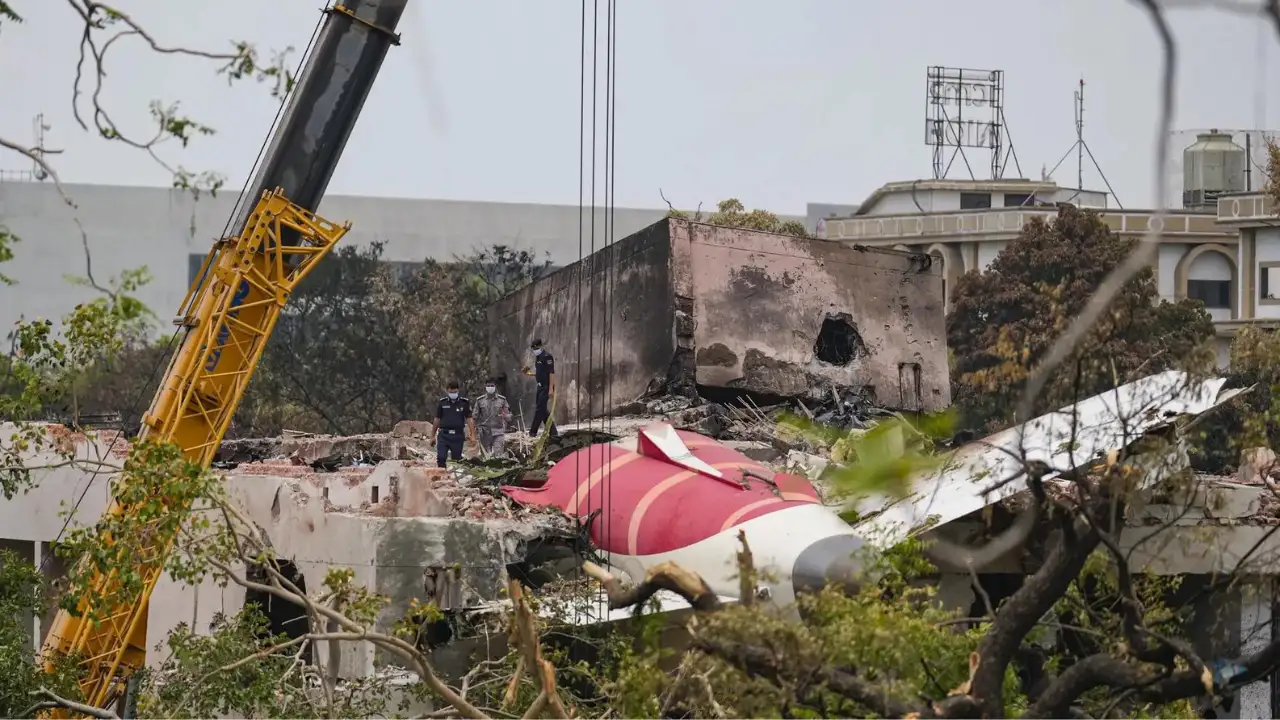
Overview of the Air India Crash 2025
Ce s-a întâmplat?
On March 16, 2025, Air India Flight AI-229, en route to Frankfurt, crashed just minutes after departing from New Delhi’s Indira Gandhi International Airport. The Boeing 787 Dreamliner lost altitude rapidly before crashing into a field near Rohtak, Haryana.
Villagers nearby reported seeing smoke trailing from the plane before a loud explosion. The aircraft went down only 18 minutes into the flight, turning a routine trip into one of India’s worst aviation disasters in recent memory.
When and Where Did the Crash Occur?
The crash occurred at approximately 6:42 AM local time. The aircraft lost contact with air traffic control while climbing through 18,000 feet. It crashed roughly 75 kilometers west of New Delhi in a rural area near Kalanaur. Emergency teams reached the site quickly but were met with a devastating scene of wreckage and fire.
Flight Details and Aircraft Involved
The flight was operated using a Boeing 787-8 Dreamliner, tail number VT-ANK. Delivered to Air India in 2016, the aircraft had over 22,000 flight hours and had undergone a maintenance check two weeks prior. The flight was led by a senior captain with two decades of experience and a younger co-pilot.
How Many People Were Aboard?
Passenger and Crew Numbers
The flight carried 256 people—241 passengers and 15 crew. Among them were business travelers, students, and families, including 25 children. While most were Indian nationals, the manifest also included German, Canadian, and U.S. citizens.
Casualties and Survivors Update
Out of those on board, 224 people lost their lives. Only 32 survived, primarily those seated at the rear of the plane. Many of the survivors remain hospitalized, some in critical condition. Air India is assisting affected families and has dispatched counselors to support those arriving in Delhi and Frankfurt.
Official Responses
Air India CEO Alok Misra expressed deep sorrow in a press briefing, pledging full cooperation with the investigation. The Directorate General of Civil Aviation (DGCA) immediately grounded all Dreamliners in the airline’s fleet. Civil Aviation Minister Jyotiraditya Scindia described the day as one of the darkest for Indian aviation.
Possible Causes of the Crash
Early Clues and Eyewitness Accounts
Multiple witnesses saw smoke coming from the aircraft before it dropped from the sky. Some described an unusual bank or tilt, while others heard a sharp noise moments before impact.
Investigators recovered both the flight data and cockpit voice recorders within a day. Despite minor fire damage, both black boxes are expected to provide crucial information.
Mechanical Issue or Human Error?
While it’s too early to determine the exact cause, experts suspect a significant mechanical or structural failure. The absence of a distress call suggests that the incident may have escalated too fast for the crew to react. Given the captain’s experience, pilot error seems less likely but hasn’t been ruled out.
Other Factors Under Review
Weather conditions were stable, with clear visibility and no signs of turbulence. However, the possibility of a bird strike or debris entering the engine remains under consideration. Radar data also indicated erratic pitch and altitude shifts, raising concerns about autopilot or control system issues.
What We Know About the Boeing 787 Dreamliner
Actualizare pentru accident Air India 2025
The 787 Dreamliner is widely used for international travel and is known for its fuel efficiency and long-range capabilities. It has a generally strong safety record since entering service in 2011.
Past Technical Concerns
Despite its reputation, the Dreamliner has had issues in the past. În 2013, it was temporarily grounded due to battery fires. Since then, Boeing has issued several updates to address electrical and structural problems. More recently, airlines reported minor fuselage cracks in older models, bringing added scrutiny to the aircraft.
Why It Was Used for This Flight
Air India relies heavily on the 787 for its long-haul operations. Its efficiency and range make it suitable for transcontinental routes like Delhi to Frankfurt. Until now, there were no public reports of problems with the aircraft involved in the crash.
Government and Global Aviation Response
Ministry of Civil Aviation
India’s Civil Aviation Ministry has launched a formal investigation, with a task force dedicated to reviewing procedures, maintenance records, and flight data. Minister Scindia emphasized transparency and the need for answers.
International Reactions
The International Civil Aviation Organization (ICAO) and the U.S. National Transportation Safety Board (NTSB) have offered assistance. Boeing has dispatched a technical team to India. Other airlines, including Lufthansa and ANA, have increased safety checks on their Dreamliners.
Immediate Safety Measures
The DGCA has ordered a temporary grounding of Air India’s Dreamliners and a full audit of maintenance protocols. Several countries have followed suit with precautionary inspections of their fleets.
Impact on Air India and the Aviation Sector
Flight Operations and Routes
The crash has already impacted Air India’s schedule. Several international routes are being delayed or consolidated while the airline reassesses its aircraft availability and safety procedures.
Public Trust and Financial Fallout
The incident is a setback for Air India, which had been undergoing a major rebranding under the Tata Group. Analysts expect a dip in public confidence and potential financial turbulence in the coming months.
Implications for Boeing
This tragedy puts Boeing under fresh scrutiny. Already facing questions over the 737 MAX, the company may now see renewed global reviews of its certification and inspection practices, not just for the 787 but across its entire lineup.




Leave a Reply